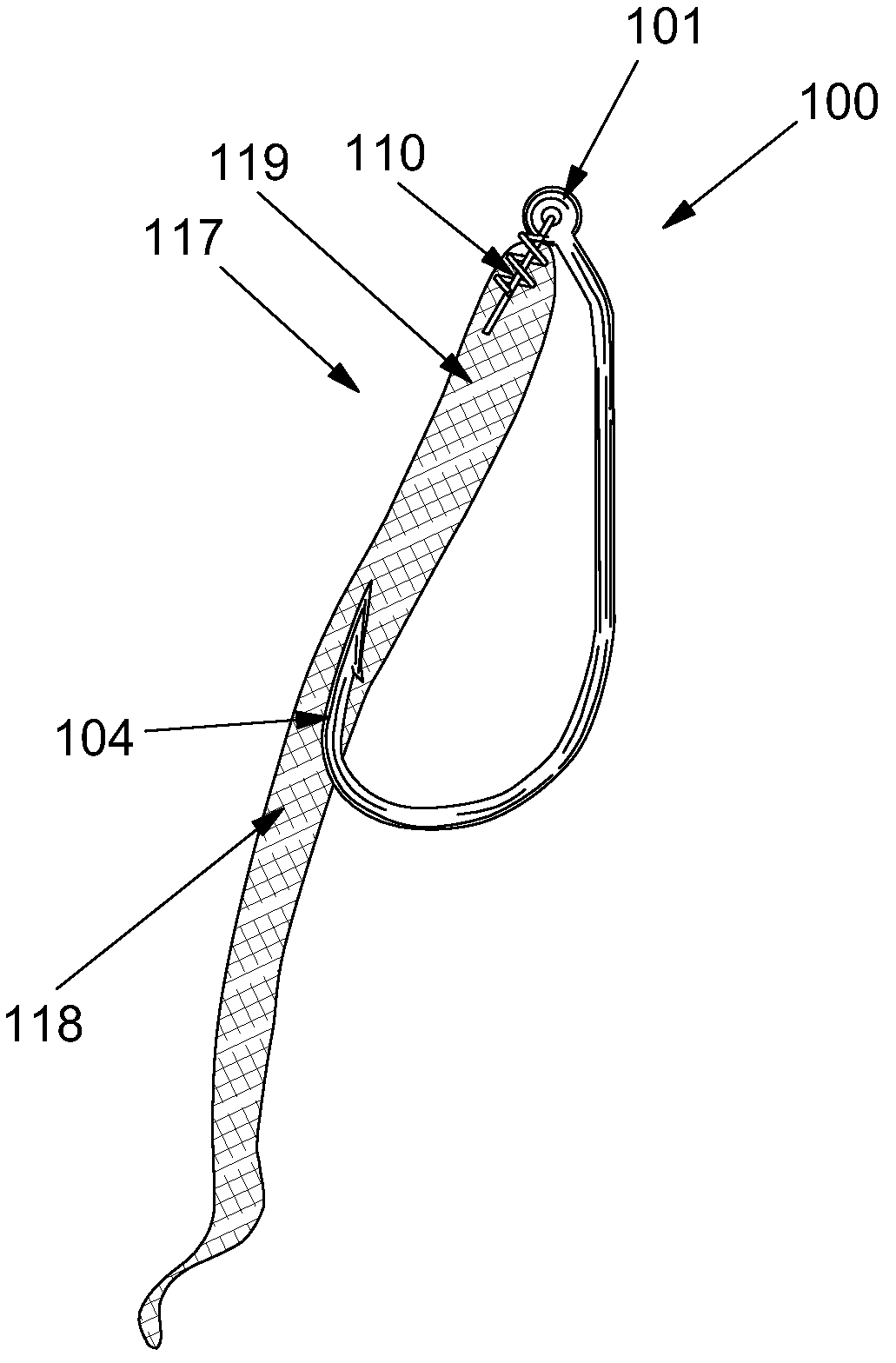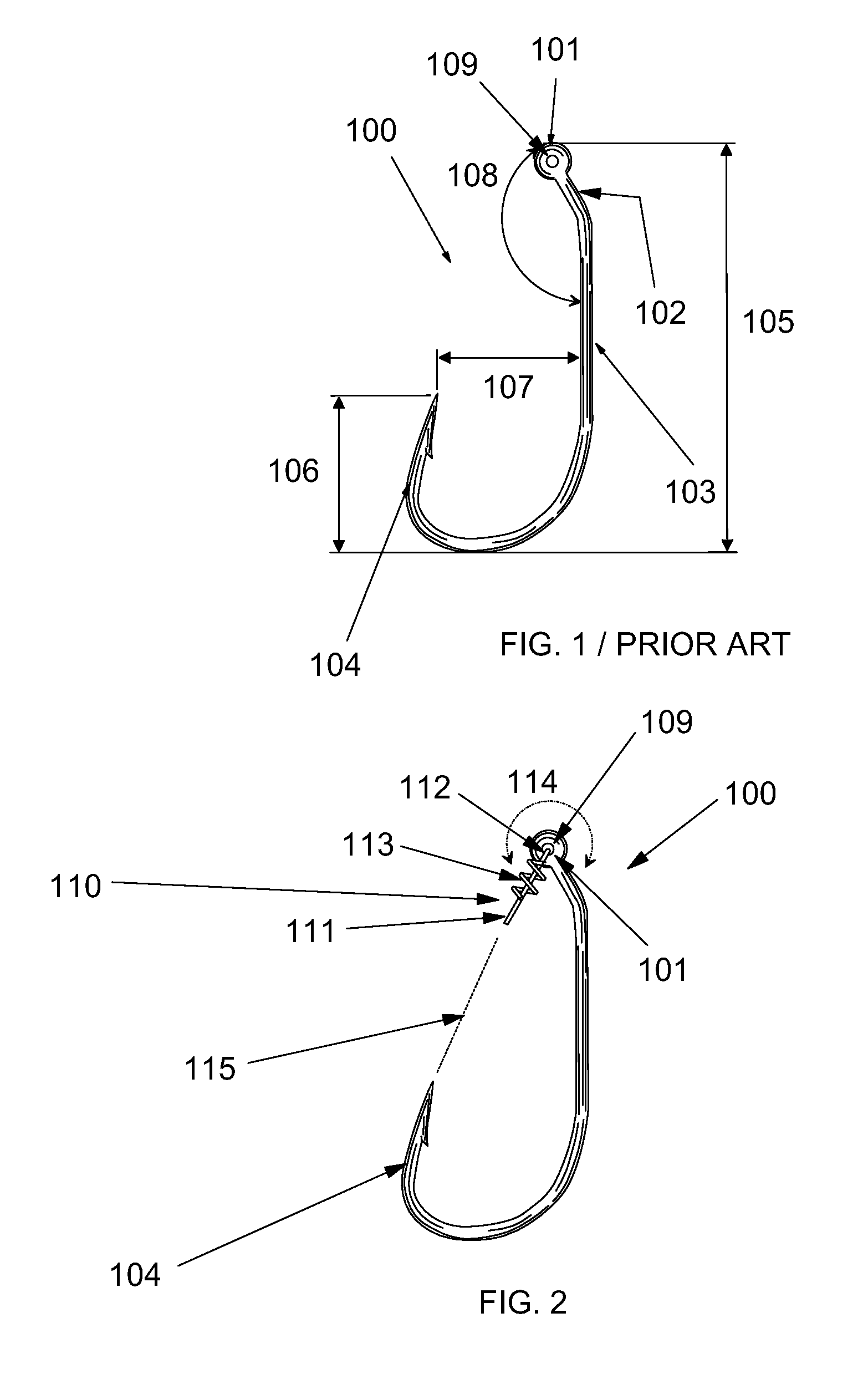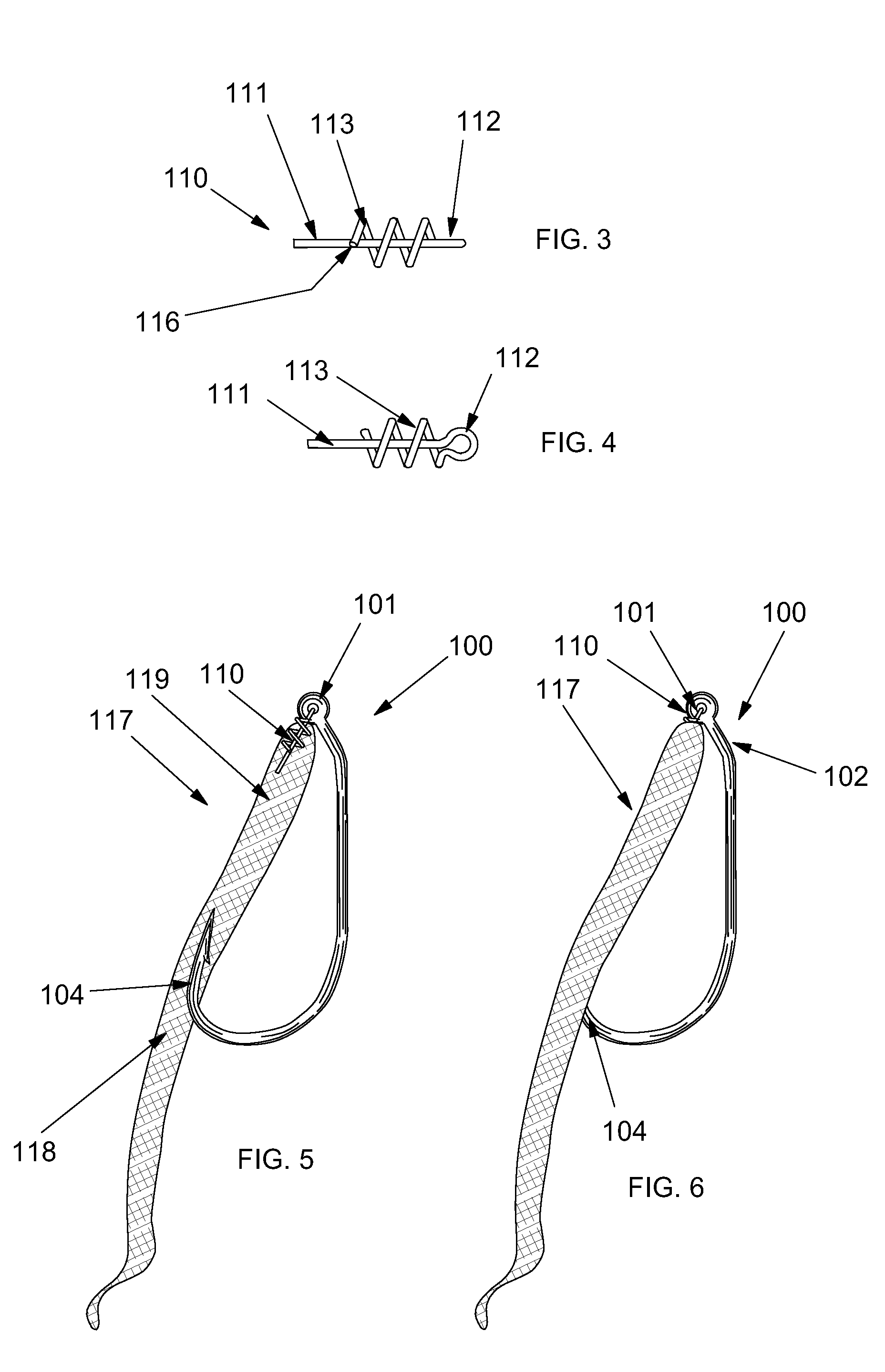Soft bait connector for a fishing hook
a technology of soft bait and connector, which is applied in the field of fishing hook features, can solve the problems of prior art co-linear and dual connection attachment of soft bait to fishing hook in actual use, damage to the inside part of the hook, and loss of point shielding, so as to prevent shear damage
- Summary
- Abstract
- Description
- Claims
- Application Information
AI Technical Summary
Benefits of technology
Problems solved by technology
Method used
Image
Examples
Embodiment Construction
[0034]The invention is now discussed with reference to the figures.
[0035]FIG. 1 shows a fishing hook 100 comprising a top end 101 defining an eyelet 109, said top end 101 extending down to inclined portion 102, which portion 102 extends down to shaft 103, which shaft 103 extends to a curved portion and to the barbed end portion 104. A mid section of hook 100 is defined as portion 102 and shaft 103 together. Prior art sizes of hooks 100 are shown in the table below. The numerical measurements in the table are measured in millimeters. The top row of the table are measurements corresponding to those shown in FIG. 1.
[0036]
SIZEL / 105T / 106G / 1071 / 0 39.515.214.62 / 0 42.816.415.83 / 0 45.918.317.34 / 0 51.720.019.15 / 0 55.221.620.86 / 0 61.523.522.8
[0037]Angle 108 between inclined portion 102 and 103 is about 150 degrees.
[0038]FIG. 2 shows invention connector 110 comprising an eyelet portion 112 which extends downward in two forms. First, portion 112 extends down to pin 111 (extending upward to porti...
PUM
 Login to View More
Login to View More Abstract
Description
Claims
Application Information
 Login to View More
Login to View More - R&D
- Intellectual Property
- Life Sciences
- Materials
- Tech Scout
- Unparalleled Data Quality
- Higher Quality Content
- 60% Fewer Hallucinations
Browse by: Latest US Patents, China's latest patents, Technical Efficacy Thesaurus, Application Domain, Technology Topic, Popular Technical Reports.
© 2025 PatSnap. All rights reserved.Legal|Privacy policy|Modern Slavery Act Transparency Statement|Sitemap|About US| Contact US: help@patsnap.com



